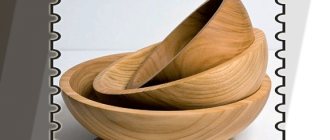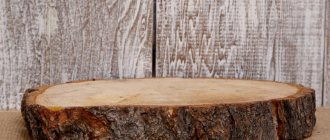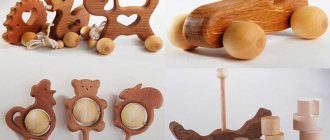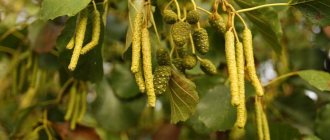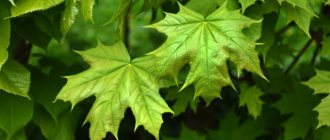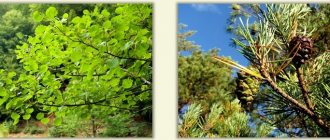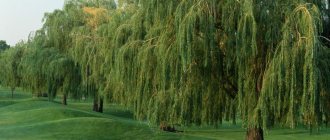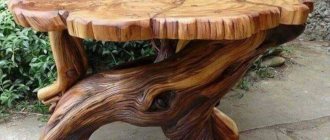There is an element of miracle in wood carving: the transformation of silent material into something living, tangible, recognizable. Wood carving, in which animals and birds often appear, can become a craft that harmoniously combines technology and artistic principles, “intelligence of the hands” and an emotional message. You will learn about how to make three-dimensional animals and birds from wood, the necessary tools and materials from our article.
Popular animals and birds among woodcarvers
Volumetric sculptural carving is one of the most complex (if not the most complex) types of carved creativity. Decorative animal art has been developing for a very long time, and today it is even experiencing some revival. If you want to learn how to carve attentive owls and clumsy bears, peaceful ducks and nosy foxes, be sure to observe the natural behavior of animals in nature. To do this, you can simply watch programs on channels about animals. This way you will become familiar with the plasticity of animals, their characteristics, and these observations will help in your creativity.
Each author gives the bear a unique character
Probably the most popular figure of the animal world among carvers is the bear. The hero of Russian fairy tales, the mighty ruler of the forest will decorate a dacha, a country house, or the walls of a roadside cafe. The owl that inspires carvers the most is the bird. For a country house, for a hunter’s room, this option is expected, but still interesting.
Huge eagles with an impressive wingspan, calm ducks, hardworking beavers and curious badgers - all these heroes can decorate homes and premises that are inextricably linked with the very spirit of nature and the forest. Carved owls can decorate armchairs and massive chairs, the figure of an animal can become part of the furniture (like the head of a bear, for example, can crown a throne).
Wooden animal figurines
Original wooden crafts for the garden often depict recognizable, stylized animals or birds. From several saw parts you can easily make a figurine of a hare, bear or owl. More complex three-dimensional sculptures of animals are one of the most difficult types of creativity.
For more realistic images, it is necessary to study photographs of the selected animal, make preliminary sketches of the future work and choose the right type of wood so that too soft wood does not crumble in the most delicate places.
The most common figure among carvers at all times was the bear. Its massive figure without complex elements is easily cut from a single block, hemp or thick board.
The imagination of carvers also often turns to stylized figurines of elephants, which decorate many interiors. It is a little more difficult to carve birds with open wings, but you can learn patience as you work on each feather of an eagle or falcon's wings.
Volumetric animals and birds
Animals carved from wood need to learn from master craftsmen who have literally honed their craft. Take, for example, the Japanese carver Mori Kono. The strength of this specialist’s skill is in the amazing detail of the figures, sculptures of carved animals that seem to be a frozen moment of forest life. The master presents a series of sculptures of badgers, raccoons, bears, owls, and rabbits. Mori always tries to depict animals in action, and this is how the work of a pro will differ from the work of a beginner.
Mori Kono. Raccoons.
What makes the master’s approach to carving three-dimensional figures different is that he has to literally delve into the anatomy of the animal, study its habits, and look closely at the smallest details. Beginners start with static figures, while pros specialize in dynamic sculptures. The goal of the masters’ work is also important: their task, among other things, is to draw attention to the fragile and vulnerable inhabitants of the forest, who often suffer from human actions. Carved sculptures, unique in their precision, are a kind of human call to environmental awareness, the philosophy of reasonable consumption and caring attitude towards all living things.
Key holder and key rings
An interesting and convenient element of the interior can be a key holder, which is designed to store the keys of all family members. By having a permanent place for your keys, you can save time and hassle by not having to look for them before leaving home.
For each, you can come up with your own shape, color or inscription on the keychain, which are also originally made from small waste boards or slats. Cuts of dense wood coated with varnish with metal holders for keys screwed into them are also suitable for this purpose.
Required tools and materials
Each master assembles his own set. But there is a minimum set, without which it is practically impossible to approach the art of volumetric carving.
You will need the following in your work:
- cutter - a knife with a short beveled blade, the tool is the main one, as it is used both in rough processing and in the formation of small parts;
- jamb - used to create ornaments on planes;
- chisels - needed for sampling material, forming an in-depth relief;
- rivets - chisels with a spear-shaped blade;
- saw – needed for actually cutting out the workpieces;
- drill - for drilling holes;
- rasps, a sander, a set of drills - all this is needed to ensure that the animal figures match the sketch and turn out as attractive as possible.
Selecting wood can be called a separate art. For example, decks will be useful for a craftsman to make simple life-size sculptures. Tree butts are needed to make future animals. And if you decide to start by shaping the figure of a cat, take a closer look at the branching trunks.
The most comfortable types of wood to carve are poplar, alder, aspen, apple tree, hazelnut, and linden. Any material must be whole and dry, not damaged by rot and pests.
Material selection
The quality of the finished product depends entirely on how well the material is chosen. The main types of wood used for work are:
- linden;
- aspen;
- birch;
- pine;
- oak or ash;
- alder;
- apple or pear tree;
- maple;
- rowan;
- larch;
- juniper.
Beginners are recommended to make their first wooden figures from linden .
The material is easy to cut and does not form cracks. Large sculptures are created from aspen, as it is characterized by chipping. Birch has an unusual topography. For fine carving and creating decorative elements, walnut will be indispensable. Do not start working with the material until it is dry. The workpiece is wrapped in polyethylene and sent to a warm place.
Master class on carving an owl from wood
Creativity begins with the preparatory stage. The first thing you need to do is a sketch (picture). You can find a drawing on the Internet, in magazines, adapt it from a photograph, or simply come up with it yourself.
Next, you select the base, the material from which the owl will be made. Interesting works can be obtained from a stump. If you decide to do this, prepare your work area. Protect the lawn and nearby trees on the property (if any).
Wood carving - owl step by step:
- Sand the trunk, remove the bark and evaluate the quality of the tree. Only living wood should remain in the finished sculpture, without rotten areas.
- It's time for the rough stuff. At this stage, the master takes a chainsaw and falls off large pieces of wood.
- Next, the specialist begins to “draw” the figure. Each master has his own carving secrets; for example, some craftsmen make do almost exclusively with a sharp chisel and a knife. Wood carving is carried out along the grain (on chamfers). This means that there will be no subsequent treatment with abrasive materials. This approach makes the figures of birds and animals in wood carvings more realistic.
- If you draw up a sketch from different angles and projections, it will be easier to work. After the owl is completed, the smallest details are not left unattended, the figurine should be coated with a special paint mixture. The bird can be painted with paints (with a spray gun or by hand).
Why exactly the owl sitting on a stump? Because this is a complete, laconic sculpture that does not look artificial or embellished. You get the feeling that the bird has just sat down to rest and is about to take off for its night hunt.
For information on how to carve a bear from wood, read our article: “How to carve a bear from wood: description, tools, finishing the sculpture.”
Useful little things made of wood
Numerous accessories and household items look good when they are simple and light crafts made of wood.
Numerous examples of making wall clocks based on sawn wood and other options for using plywood, dies, and veneer for these purposes can be found in the photos on the Internet.
A beautiful holder for keys in the hallway or bottles in the dining room can be made from waste boards, cutting out the necessary holes in them and treating them with paints and varnishes.
Small pictures or photographs placed in frames made of painted twigs or cut out slats look original on the walls. The dressing table is decorated with comfortable carved boxes for storing jewelry.
A stand for pencils and pens made from individual branches of the same length glued to the plastic base of a cut water bottle will look beautiful on a business desk. You can easily connect such dissimilar materials using silicone and a glue gun.
Master class on creating a cat figurine
If you are just trying your hand at carving and are not ready to take on a complex figure, start by making a wooden cat figurine. Even your first experience in carving will be successful.
Cat made of wood step by step:
- Draw a sketch - a simple image of a cat with an arched back. Cut out the design along the contour (it is more convenient to make a sketch on cardboard).
- The sketch needs to be transferred to the tree, simply tracing the cat along the contour. Then you need to cut the animal along this contour with a hacksaw.
- A chisel and mallet will help cut the shape. Rough processing completed!
- Take knives and cutters - now it depends only on your initial skills and efforts how perfect the cat will turn out. In this matter, experience will be the best advisor; hands should acquire “tactile professionalism.”
- Now it's time for sanding. The sanded figure must be covered with stain, the color of which you choose yourself. After staining, the figurine must be sanded again.
- Finally, the cat can be coated with several layers of varnish. Separately, you can cut out a stand for the cat, which is processed in exactly the same way as the volumetric figure itself. You can connect the cat to the stand using Titan glue.
In this case, the figurine is simple and does not require additional decoration. But a wooden sculpture can be painted with acrylic, decorated with rhinestones, etc.
Wooden products for home decor
Original and interesting wood crafts can become a decorative addition to any home. Products made from natural materials pleasantly enliven the space and bring a great deal of comfort to technologically designed, modern interiors.
In addition to exclusive pieces of furniture, extensive panels and stairs carved by masters, everyone can independently create unique hangers, frames and paintings from wooden waste.
Unusual shapes of branches are suitable for making a unique hanger or a kind of curtain rod. Also, a clothes hanger in the hallway can be decorated with a combination of cuts from tree branches and trunks of different diameters and colors.
Outdated furniture can be given a new decor by finishing it with beautiful wooden dies of different thicknesses. On the wall in the living room you can make a mantelpiece from carved timber, or decorate the wall in the style of a log house.
Part of the wall can be finished, and at the same time insulated with a beautiful panel of wooden parts. To do this, you can choose the outer wall of the corridor, the children's room, and also make an apron over the work area in the kitchen from hardwood, such as cherry, walnut, ash or beech.
A special place in the work of sophisticated artists is occupied by carved panels depicting complex subjects, or paintings made from assembled and cut pieces of different wood.
Instead of paints, the master uses natural colors, for example, light shades of birch or ash in combination with dark beech, gray walnut and mahogany.
Carefully cut out according to a mosaic template drawn in advance and processed, the fragments are assembled on a plywood base using epoxy resin or PVA. Using the same principle, complex typesetting panels are made from scraps of natural veneer.
Advice from professionals
Volumetric carving is the aerobatics of a carver. Of course, the master must have some artistic potential, flair, and taste. But even all this will not bear fruit if the specialist does not engage in technology and does not gain experience.
Tips for beginners:
- read specialized literature, watch carefully and rewind master classes on the Internet;
- remember how to work with drawing tools - school experience will be useful, and geometric carving will increase the scope of your abilities;
- lay out tools correctly, have protective covers for them and remember safety precautions;
- take care of proper working lighting - you can’t think of anything better than natural light, the light should fall from the front and to the left;
- walk through the forest - find interestingly woven roots, twigs and branches there, they themselves will give you ideas for the next work;
- The most valuable wooden sculpture is considered to be the one that is not made from scratch, but is minimally supplemented with the author’s tools.
Your best assistant is practical experience. Start with the simplest animal figures; don’t be afraid of mistakes and the fact that it will be difficult to complete in one day.
Happy endeavors!

